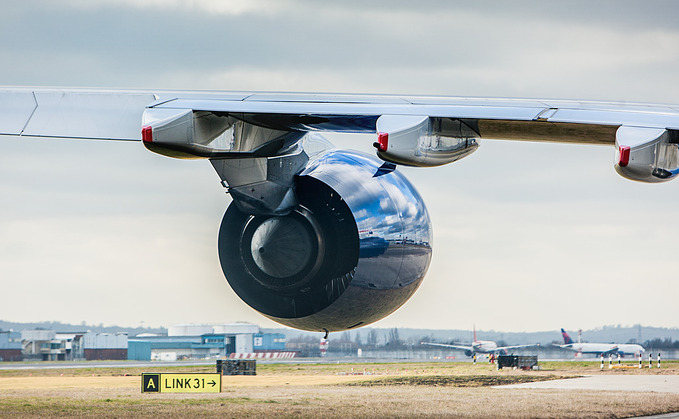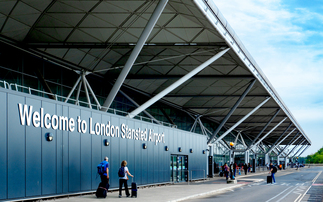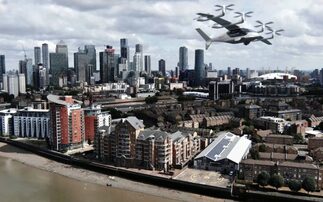
The government insists airport expansion can be made compatible with climate goals, but how would you go about proving that will be the case?
If you wanted to sell the argument Heathrow expansion is compatible with the UK's climate goals, how would you go about doing it?
You shouldn't want to do this, of course, because Heathrow expansion is - and always has been - a slightly mad idea. Not as mad as wanting to build an airport in the Thames Estuary in an age of rising sea levels, but still quite bonkers.
Were it ever to secure planning approval and raise the necessary finance the project would require the demolition of hundreds of homes, the rerouting of the busiest corner of the UK's busiest motorway, and some kind of quasi-magical mechanism for complying with air and noise pollution rules. All this when there are three other airports within 45 minutes of central London where it would be much easier and cheaper to boost capacity. Any sane airport expansion strategy for the UK would start and end with better rail links to Gatwick, Stanstead, and Luton, not to mention Manchester and Glasgow.
It is this that explains the surprisingly muted response to the government's sudden decision to back plans for a third runway from the many Labour MPs and civil society groups that remain implacably opposed to the project. The same political, technical, and financial reasons that have stymied for the plans for two decades mean it remains very unlikely to happen. Boris Johnson will not have to lie in front of any bulldozers just yet.
But what if having publicly announced your support for the project, you did want to demonstrate Heathrow expansion - or perhaps more pertinently, any form of airport expansion - could be made compatible with legally binding climate targets? Can it be done?
You'd want to start with the fact that under both the UK's climate goals and international industry commitments, the aviation sector has to get to net zero emissions by mid-century anyway. That means that by the late 2030s - realistically the earliest a new runway could be open for business - the sector would already have to be deploying much lower and potentially even zero emission technologies.
You'd want to say the UK could and should aspire to be right at the forefront of developing these technologies and fuels - the home of the jet engine once again driving the next great technological leap for the global aviation industry. That we can be pioneers in green aviation technologies and fuels, and here is a credible strategy and properly funded programme for ensuring we get there. That ever more people are going to want to fly, especially as emerging markets continue to prosper. That the world is going to have to make zero emission aviation a reality, and we are determined the UK should lead in that endeavour.
Chancellor Rachel Reeves and her allies made a nod to these arguments last week with vague talk of advances in sustainable aviation fuels (SAFs). But what they singularly failed to do is sell a vision of why low and zero emission aviation matters and provide a detailed plan on how it might actually be delivered in line with those legally-binding climate goals.
The problem, of course, is this argument takes techno-optimism to credulity-stretching levels. It requires opponents - and crucially High Court judges - to accept aircraft and fuels that are not yet available at even a fraction of the necessary scale will definitely materialise in a cost competitive fashion before any new runways are complete. It is worth noting, the projections that suggest these salvation technologies will appear in time are often provided by an industry that has a long history of over-promising and under-delivering on its environmental gains.
The analogy used to be that it was like being told you could eat as many doughnuts as you like because a magic diet pill would be on the way soon. They did eventually invent that pill, but the point still stands. There is a risk you end up with a nice new runway and no new zero emission aircraft to land on it. At that point you have to either not use the multi-billion pound runway or go ahead and breach your climate targets. This is not a happy choice, especially when you've just spent the GDP of a small nation redirecting a motorway under an airport and global temperatures are still spiralling ever upwards.
But what if the government was really serious about proving that airport expansion was compatible with its net zero targets? What if it recognised a failure to do so would open the door for the Conservatives and Reform to go into the next election campaigning for the repeal of the Climate Change Act, declaring that 'if the law won't let us build more airports so you can go on holiday, then we will change the law'? What if it wanted to play that leading role in the development of a genuinely green aviation industry that will be critical to meeting global climate goals, especially when many other countries are far less constrained in the number of runways they are building?
What you would need then is a credible strategy and robust legal safeguards to ensure low and zero emission aviation is actually delivered. You would first acknowledge it is ridiculous a country the size of the UK does not have a high speed rail network and would commit to building it, while also introducing policies to disincentivise the shortest haul flights. You would then recognise the UK is already a leader in the development of zero and low emission aviation technologies - as evidenced by announcements this week from the likes of ZeroAvia and Avooma Airlines - and would back the companies in this nascent industry to the hilt. You would explain that these technologies are being tested now and need to be commercialised as quickly as physically possible - that the opportunity is there for flight that is cleaner and potentially even cheaper.
With such a strategy in place you could then tell those that want more runways that they can have them, but only if they accept legal constraints to ensure these runways can only be used by low and zero emission aircraft. It is a trade-off that makes complete sense and is entirely in line with promises airport expansion can be done without breaching climate goals.
And if the industry can't attract investors with such safeguards in place, then maybe there isn't sufficient confidence it can make airport expansion compatible with net zero after all.
A version of this article first appeared as part of BusinessGreen's Overnight Briefing email, which is available to all BusinessGreen Intelligence members.









